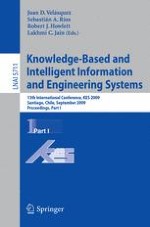On behalf of KES International and the KES 2009 Organising Committee we are very pleased to present these volumes, the proceedings of the 13th Inter- tional Conference on Knowledge-Based Intelligent Information and Engineering Systems, held at the Faculty of Physical Sciences and Mathematics, University of Chile, in Santiago de Chile. This year, the broad focus of the KES annual conference was on intelligent applications, emergent intelligent technologies and generic topics relating to the theory, methods, tools and techniques of intelligent systems. This covers a wide range of interests, attracting many high-quality papers, which were subjected to a very rigorous review process. Thus, these volumes contain the best papers, carefully selected from an impressively large number of submissions, on an - teresting range of intelligent-systems topics. For the ?rsttime in overa decade of KES events,the annualconferencecame to South America, to Chile. For many delegates this represented the antipode of their own countries. We recognise the tremendous e?ort it took for everyone to travel to Chile, and we hope this e?ort was rewarded. Delegates were presented with the opportunity of sharing their knowledge of high-tech topics on theory andapplicationofintelligentsystemsandestablishinghumannetworksforfuture work in similar research areas, creating new synergies, and perhaps even, new innovative ?elds of study. The fact that this occurred in an interesting and beautiful area of the world was an added bonus.
